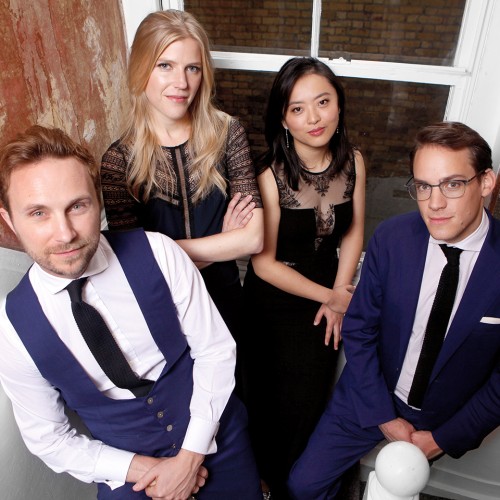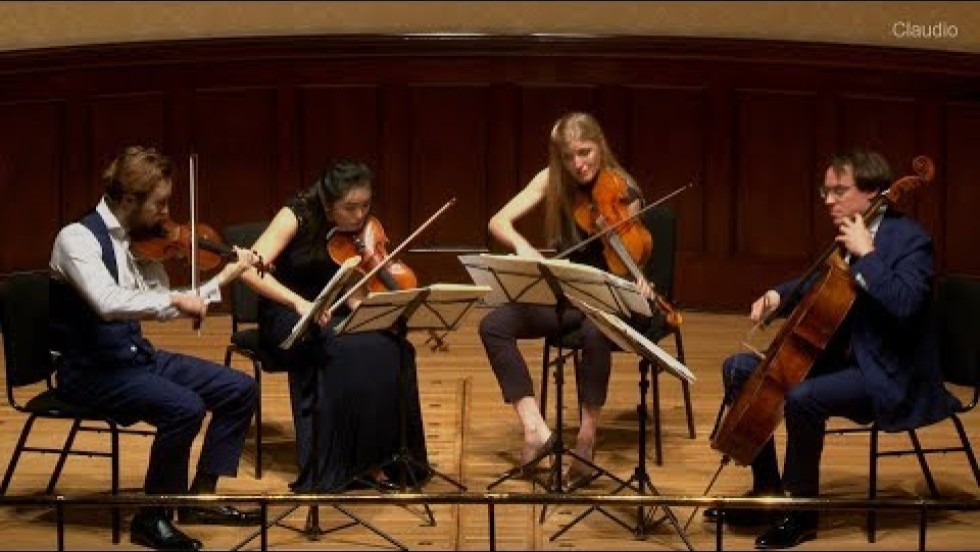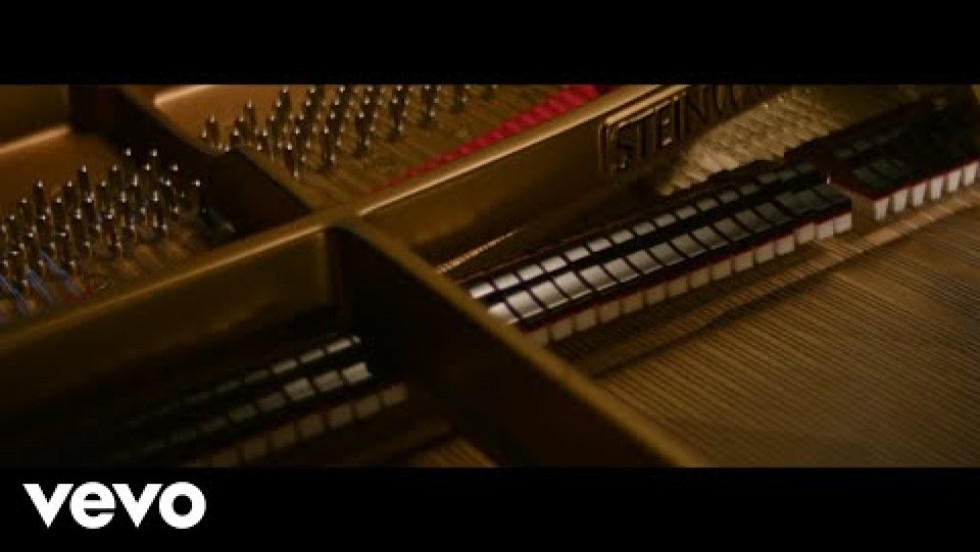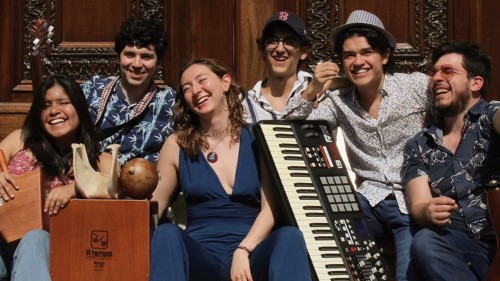
Doric String Quartet with Benjamin Grosvenor, piano
Cookie Notice
This site uses cookies to measure our traffic and improve your experience. By clicking "OK" you consent to our use of cookies.
The Doric String Quartet—heard for the first time on the Debut Series in 2018—is a leading quartet of its generation, receiving enthusiastic responses from audiences and critics across the globe. With past performances in leading concert halls like the Berlin Konzerthaus, the Louvre, and Carnegie Hall, as well as regular performances at Wigmore Hall, we look forward to welcoming the Quartet back to perform Beethoven’s “Serioso” Quartet and Haydn’s “Frog” Quartet at Jordan Hall this season.
Pianist Benjamin Grosvenor—a Debut Series alumnus from 2013—joins the Quartet for British composer Frank Bridge’s Quintet in D minor, written in 1904-05. Grosvenor “commands the stage with aristocratic ease” and “makes you sigh with joy” wrote The New York Times. He has been busy since his last Boston appearance, appearing as an orchestral soloist and recitalist across Europe and the United States, serving as an artist in residence at Wigmore Hall in 2021/22, and releasing recordings of Chopin, Liszt, and more on Decca Classics.
Experience this collaboration that’s sure to amaze!
Program Details
Ever since Haydn refined the string quartet as a genre, it has been a vessel for experimentation. Beethoven, in writing his 11th string quartet, “Serioso,” took full advantage of this tradition. Technically written during his middle period, the quartet features much of what characterizes his late period works: the piece interrogates the listener, placing the burden of intelligibility firmly in their hands. In fact, Beethoven, who experimented with his string quartets more than any other composer of the Classical era, felt audiences wouldn’t be ready to hear this quartet. It was “never to be performed in public,” he wrote in one letter in 1816, a telling observation given that Beethoven composed the quartet in 1810. Its challenge to the listener is clear, especially to those used to standard early 19th-century music.
The first movement, marked by Beethoven’s trademark suddenness throughout, is the thesis statement for the entire piece, marking its ambition to drastically compress what is expected in a string quartet. The remarkably short movement shifts between intense unisons and sweetly lyrical passages without much transition. Though in sonata form, the exposition is not repeated, the development section is so short that every change feels abrupt, and the recapitulation is a frantic restatement that is unceremoniously severed before a coda that leaves the listener with the feeling that more should have been written.
Although the first movement feels like a tangled ball of circuitous themes, it is anchored by a simple four-note motif that most of its material springs from: the D-flat / C / D / E grouping that first appears as four staccato notes concluding the first phrase of the piece. These four notes also inform the material of the more consistently lyrical second movement, providing a sense of long form continuity after a shocking start. In relation to the preceding movement, the Allegretto feels like a resting place, but the densely textured fugue at the center again demands the listener’s attention. Lyricism returns toward the end of the movement, but just as the music feels it has resolved, a dissonant chord unsettles the piece, pushing it toward a moment of transition.
Despite multiple extended lyrical breaks from intensity, the final two movements are as fervent as the first. Each, but especially the final movement, firmly emphasizes that sudden contrast is the primary subject that Beethoven is exploring. As the third movement transitions from its yo-yo-ing, but comparatively regular, Scherzo-Trio form, a winding, darkly alluring larghetto begins the finale, only to suddenly spiral into an intense triple meter dance, marked Allegretto Agitato. Just as the close of the movement seems clear and predictable, the Agitato slows to a halt and, in the most sudden shift of the piece, transitions to an almost comically playful Allegro in F major. The 30-second coda, in stark contrast to the rest of the work, shades the entire piece in a veil of irony. The listener must now think back on what they have heard and reconsider the entire quartet from a new perspective.
©2023 Connor Buckley.
Ever since Haydn refined the string quartet as a genre, it has been a vessel for experimentation. Beethoven, in writing his 11th string quartet, “Serioso,” took full advantage of this tradition. Technically written during his middle period, the quartet features much of what characterizes his late period works: the piece interrogates the listener, placing the burden of intelligibility firmly in their hands. In fact, Beethoven, who experimented with his string quartets more than any other composer of the Classical era, felt audiences wouldn’t be ready to hear this quartet. It was “never to be performed in public,” he wrote in one letter in 1816, a telling observation given that Beethoven composed the quartet in 1810. Its challenge to the listener is clear, especially to those used to standard early 19th-century music.
The first movement, marked by Beethoven’s trademark suddenness throughout, is the thesis statement for the entire piece, marking its ambition to drastically compress what is expected in a string quartet. The remarkably short movement shifts between intense unisons and sweetly lyrical passages without much transition. Though in sonata form, the exposition is not repeated, the development section is so short that every change feels abrupt, and the recapitulation is a frantic restatement that is unceremoniously severed before a coda that leaves the listener with the feeling that more should have been written.
Although the first movement feels like a tangled ball of circuitous themes, it is anchored by a simple four-note motif that most of its material springs from: the D-flat / C / D / E grouping that first appears as four staccato notes concluding the first phrase of the piece. These four notes also inform the material of the more consistently lyrical second movement, providing a sense of long form continuity after a shocking start. In relation to the preceding movement, the Allegretto feels like a resting place, but the densely textured fugue at the center again demands the listener’s attention. Lyricism returns toward the end of the movement, but just as the music feels it has resolved, a dissonant chord unsettles the piece, pushing it toward a moment of transition.
Despite multiple extended lyrical breaks from intensity, the final two movements are as fervent as the first. Each, but especially the final movement, firmly emphasizes that sudden contrast is the primary subject that Beethoven is exploring. As the third movement transitions from its yo-yo-ing, but comparatively regular, Scherzo-Trio form, a winding, darkly alluring larghetto begins the finale, only to suddenly spiral into an intense triple meter dance, marked Allegretto Agitato. Just as the close of the movement seems clear and predictable, the Agitato slows to a halt and, in the most sudden shift of the piece, transitions to an almost comically playful Allegro in F major. The 30-second coda, in stark contrast to the rest of the work, shades the entire piece in a veil of irony. The listener must now think back on what they have heard and reconsider the entire quartet from a new perspective.
©2023 Connor Buckley.
Franz Joseph Haydn was a composer who, in the face of newness, could reinvent his style. Although he was always an adventurous and formidable talent, Haydn’s exposure to new compositional methods that the young Mozart exemplified pushed him to new depths of exploration. Haydn was in his mid-50s when he composed his Op. 50 quartets in Prussia, but the collection of pieces, especially his D-major quartet, “The Frog,” are more experimental than much of what he wrote in his 20s.
Haydn’s inventiveness is on display from the start. The expectation for a quartet in D major would be for it to start on a D-major chord. Here, Haydn begins with solo violin on an E, setting off a cadence that ends in D major only in the fourth bar. The D in the first violin is held, marking both the end of the first phrase and the beginning of the second. The form of these phrases sets a precedent for the rest of the movement, where several uneven phrases and deceptive resolutions mark transitions.
Haydn imbues the quartet with more freshness by varying which instruments carry the burden of virtuosity. Whereas in many of his early quartets Haydn relegates second violin, viola, and cello to mere accompaniment, here intricate passages are passed between instruments freely. The second and third movements are especially expressive of this. As phrases end in the Poco Adagio, the cello will rise with an arpeggio to take command or the viola will come forward to emphasize an inner voice. In the minuet, the melodic content drifts, and the shifting roles of the instruments suggest a casual conversation where time is not important.
The final movement most cogently combines all radical aspects of the quartet. The infrastructure established in the first movement where phrases end and begin suddenly and simultaneously is present here, as is the shifting texture that passes intricate passages between instruments. The movement is what gives the piece its nickname, since the violin bariolage passages are reminiscent of a "ribbit." (Bariolage is a bowing technique involving quick alternation between strings.) Haydn’s skill for rendering complexity intelligible is expertly on display here. While the movement is stuffed with complex contrapuntal and formal arrangements, the overwhelming mood here is playfulness. This is punctuated by a surprise ending, arriving not triumphantly to match what has come before, but with a descending arpeggio murmured as a sigh, a brief summary of the wayward journey Haydn has led from the start.
©2023 Connor Buckley
Franz Joseph Haydn was a composer who, in the face of newness, could reinvent his style. Although he was always an adventurous and formidable talent, Haydn’s exposure to new compositional methods that the young Mozart exemplified pushed him to new depths of exploration. Haydn was in his mid-50s when he composed his Op. 50 quartets in Prussia, but the collection of pieces, especially his D-major quartet, “The Frog,” are more experimental than much of what he wrote in his 20s.
Haydn’s inventiveness is on display from the start. The expectation for a quartet in D major would be for it to start on a D-major chord. Here, Haydn begins with solo violin on an E, setting off a cadence that ends in D major only in the fourth bar. The D in the first violin is held, marking both the end of the first phrase and the beginning of the second. The form of these phrases sets a precedent for the rest of the movement, where several uneven phrases and deceptive resolutions mark transitions.
Haydn imbues the quartet with more freshness by varying which instruments carry the burden of virtuosity. Whereas in many of his early quartets Haydn relegates second violin, viola, and cello to mere accompaniment, here intricate passages are passed between instruments freely. The second and third movements are especially expressive of this. As phrases end in the Poco Adagio, the cello will rise with an arpeggio to take command or the viola will come forward to emphasize an inner voice. In the minuet, the melodic content drifts, and the shifting roles of the instruments suggest a casual conversation where time is not important.
The final movement most cogently combines all radical aspects of the quartet. The infrastructure established in the first movement where phrases end and begin suddenly and simultaneously is present here, as is the shifting texture that passes intricate passages between instruments. The movement is what gives the piece its nickname, since the violin bariolage passages are reminiscent of a "ribbit." (Bariolage is a bowing technique involving quick alternation between strings.) Haydn’s skill for rendering complexity intelligible is expertly on display here. While the movement is stuffed with complex contrapuntal and formal arrangements, the overwhelming mood here is playfulness. This is punctuated by a surprise ending, arriving not triumphantly to match what has come before, but with a descending arpeggio murmured as a sigh, a brief summary of the wayward journey Haydn has led from the start.
©2023 Connor Buckley
Frank Bridge was a composer of impressive breadth and imagination. Over the course of his life, his compositional style transformed drastically, from romanticism in his early and mid career to an intense, expressive form of modernism in his late career. His stylistic evolution is arguably one of the more fascinating trajectories in modern classical music, and his contribution to the genre is still undervalued.
Bridge’s early romantic aesthetic is on clear display in the Piano Quintet in D minor. The style is lush, with influences from French composers like Fauré and Franck and from mature Brahms, but from its first utterance, the quintet feels unsettled. The abstract first phrase creeps slowly upward before the piano interjects with a heavily accented low register octave on the note D. It is a shocking introduction, but Bridge soon reveals that this disembodied line has a place as the first part of a dramatic melody in minor. After establishing the tonal center with the piano, the melody takes over the movement. It is a long melody with a long, tension-inducing rise that suddenly releases, quickly falling as it is passed between instruments. Bridge introduces one more melody in major later in the movement, and it is solely these two melodies that drive its development.
The second and third movements are children of the extensive first movement, both as much washed through with melodic material that dictates their form. The second movement introduces a single new melody (incidentally reminiscent of Charlie Chaplin’s "Smile") that forms the spine of the form. A central Allegro that splits the Adagio was once a separate movement that Bridge condensed for brevity, and it imbues the piece with a scintillating rush where it might end up feeling stale. It also introduces new developmental material that the last movement weaves between other reoccurring themes from throughout the piece. This finale is essentially a summary paragraph of what has come before, but the summary is jumbled. Its themes, borrowed from the rest of the piece, feel as if they are competing for dominance. They instead all serve to further the objective of the piece, energetically driving the music to its grand conclusion, as all instruments loudly play a D, the same note that the piano shocked with at the very start.
©2023 Connor Buckley
Frank Bridge was a composer of impressive breadth and imagination. Over the course of his life, his compositional style transformed drastically, from romanticism in his early and mid career to an intense, expressive form of modernism in his late career. His stylistic evolution is arguably one of the more fascinating trajectories in modern classical music, and his contribution to the genre is still undervalued.
Bridge’s early romantic aesthetic is on clear display in the Piano Quintet in D minor. The style is lush, with influences from French composers like Fauré and Franck and from mature Brahms, but from its first utterance, the quintet feels unsettled. The abstract first phrase creeps slowly upward before the piano interjects with a heavily accented low register octave on the note D. It is a shocking introduction, but Bridge soon reveals that this disembodied line has a place as the first part of a dramatic melody in minor. After establishing the tonal center with the piano, the melody takes over the movement. It is a long melody with a long, tension-inducing rise that suddenly releases, quickly falling as it is passed between instruments. Bridge introduces one more melody in major later in the movement, and it is solely these two melodies that drive its development.
The second and third movements are children of the extensive first movement, both as much washed through with melodic material that dictates their form. The second movement introduces a single new melody (incidentally reminiscent of Charlie Chaplin’s "Smile") that forms the spine of the form. A central Allegro that splits the Adagio was once a separate movement that Bridge condensed for brevity, and it imbues the piece with a scintillating rush where it might end up feeling stale. It also introduces new developmental material that the last movement weaves between other reoccurring themes from throughout the piece. This finale is essentially a summary paragraph of what has come before, but the summary is jumbled. Its themes, borrowed from the rest of the piece, feel as if they are competing for dominance. They instead all serve to further the objective of the piece, energetically driving the music to its grand conclusion, as all instruments loudly play a D, the same note that the piano shocked with at the very start.
©2023 Connor Buckley
“The Doric String Quartet led a spellbinding series of concerts, rich in variety, impeccable in execution.”
Bachtrack
Featured Artists
Videos
NEC's Jordan Hall Information
An Aaron Richmond Recital
Related Events


Kalia Vandever, trombone & Charles Overton, harp
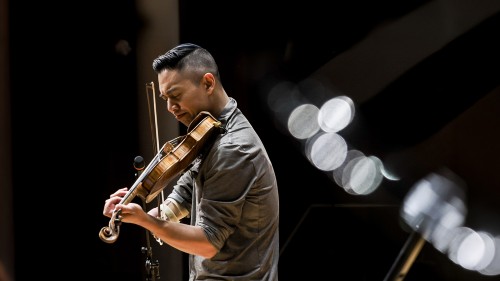
Adrian Anantawan & Friends
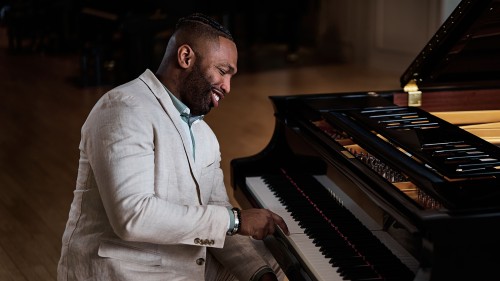
John Paul McGee Jazz Trio

J’Nai Bridges, mezzo-soprano

Music From The Sole
House is Open, Going Dark
Stay in touch with Celebrity Series of Boston and get the latest.
Email Updates Sign up for Email Updates